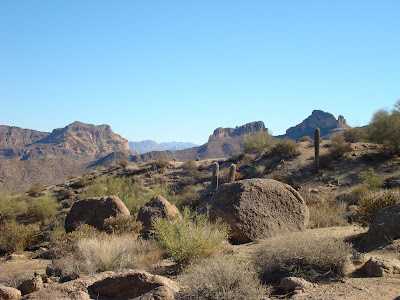 Length: 4 miles
Length: 4 milesTowering at over 7,600 ft, Four Peaks Mountain stands as the most recognizable landmark on Phoenix's eastern horizon - proudly holding the title of highest peak in Maricopa County. Although Four Peaks Mountain is only 40 miles from the Phoenix area, unless you have a high-clearance vehicle, you will be stuck traveling approximately 80 miles (each way) to access the mountain.
After driving many miles out of the way and slowly following a ten-mile, single-laned (and often snow/ice-covered) dirt road, you eventually arrive at the Lone Pine Trailhead and the start of the Brown's Peak Trail. At 7,657 ft, Brown's Peak is the tallest of the Four Peaks, providing a challenging hike through oak and pine-filled forests.
Although the Brown's Peak Trail provides a gradual climb with beautiful vistas of the neighboring Superstition Mountains and Lake Roosevelt, the true highlight during the winter months is the chance for a snowy hike! Fortunately, with several inches of snow accumulation from earlier this month, the trail provided an exquisite winter wonderland yet maintained a clearly-marked path due to its vast popularity. Although I did not complete the full-hike to the mountain's top, the Brown's Peak Trail provided an afternoon of snowy fun that was pure delight!
To view more pictures of the Brown's Peak Trail, click here.

































 Length: 4 miles
Length: 4 miles





